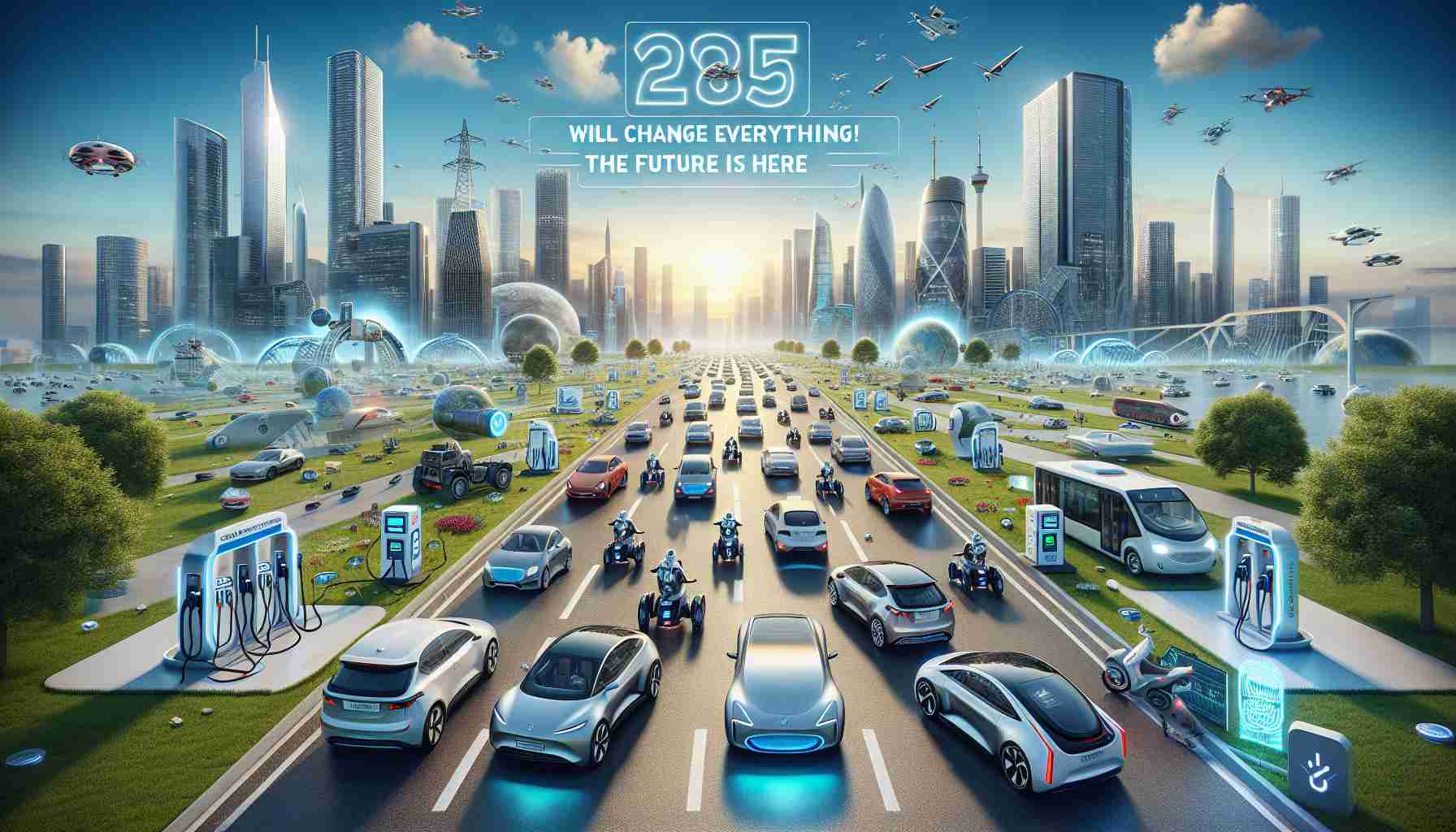Electric Vehicle Launches Set to Surge
In a groundbreaking shift, the Indian automotive market is poised for a remarkable transformation in 2025. For the first time, electric vehicle (EV) launches in the country are expected to surpass those of traditional petrol and diesel cars. This year alone will see 18 EVs among the 28 planned launches, marking a dramatic increase compared to the modest 4-5 EV models introduced over the previous two years.
The rise of zero-emission vehicles is anticipated to drive significant growth, particularly as they are projected to contribute to over 50% of the incremental sales in the passenger vehicle sector, which is set to reach 200,000 units. By the end of this year, the share of electric vehicles in total car sales is forecasted to double to 4%.
Industry leaders are optimistic about this development. Executives from major manufacturers emphasize their commitment to enhancing the electric vehicle market, confirming that many brands are preparing to tap into consumer demand.
To address potential concerns regarding charging infrastructure, companies like Maruti Suzuki are proactively installing fast-charging stations every 5-10 kilometers in major cities ahead of their first EV launch.
Furthermore, Hyundai’s strategic investments in local battery assembly and collaborations with suppliers signal a robust roadmap for supporting EV growth in India. The electric vehicle market is estimated to flourish, with sales expected to reach 932,000 units by 2030, led primarily by a booming demand for electric SUVs.
The Wider Implications of the Electric Vehicle Revolution in India
The anticipated surge in electric vehicle (EV) launches in India by 2025 is not merely a trend; it signifies a broader transformation within society and the economy. As electric vehicles become more mainstream, they will fundamentally reshuffle the automotive landscape, stimulating job creation in green technology sectors and energy management. This transition encourages sustainable practices, reflecting a cultural pivot towards eco-conscious consumerism, particularly among younger generations who prioritize environmental responsibility.
The potential environmental impacts of this shift cannot be underestimated. A substantial increase in EV adoption can lead to significant reductions in urban air pollution and greenhouse gas emissions. By 2030, if projected EV sales reach 932,000 units, they could contribute to a drastic reduction in carbon emissions, aligning with global climate goals. Moreover, encouraging local battery production mitigates reliance on international supply chains, fostering energy independence and bolstering national security.
Future trends in the automotive industry indicate that the push for electric vehicles will likely accelerate advancements in renewable energy sources, enhancing solar and wind power integration into charging stations. As governments create more incentives for EV adoption, the synergy of policy and technology may solidify India’s standing as a leader in the global electric vehicle marketplace. With this long-term significance, the focus on sustainable mobility transforms not only transportation but also the very fabric of Indian urban life.
2025: The Year Electric Vehicles Will Dominate India’s Auto Market
The Indian Electric Vehicle Revolution
In an exciting development for the Indian automotive sector, 2025 is set to mark a pivotal year, as the launch of electric vehicles (EVs) is anticipated to eclipse that of conventional petrol and diesel engines. With 18 electric models scheduled to hit the market among a total of 28 vehicle launches, this represents a substantial increase from the previous two years, which saw just 4-5 new EV models each year.
Trends Shaping the Future
The projected growth of zero-emission vehicles is substantial, with EVs expected to account for more than 50% of the incremental sales in the passenger vehicle market. By the end of this year, electric vehicles are projected to increase their market share in overall car sales to roughly 4%, a significant leap forward.
Industry Commitment to Electric Vehicles
Leaders in the automotive industry are expressing optimism about this transformative shift. Major brands are ramping up efforts to meet the increasing consumer demand for electric vehicles. This trend signifies a broader commitment to sustainability and innovation within the sector.
1. Key Player Investments: Industry giants such as Hyundai are steering investments toward local battery assembly, collaborating closely with suppliers to ensure a solid foundation for EV growth in India. This not only bolsters the production of electric vehicles but also aims to create a more resilient supply chain.
2. Charging Infrastructure Development: Addressing one of the primary concerns among potential EV buyers—charging infrastructure—companies like Maruti Suzuki are taking proactive measures. They are installing fast-charging stations every 5-10 kilometers in metropolitan areas, facilitating a smoother transition for consumers focusing on electric mobility.
Pros and Cons of Electric Vehicle Adoption
# Pros:
– Environmental Benefits: Major reductions in carbon emissions as EV adoption grows.
– Cost Efficiency: Over time, EVs can offer savings on fuel and maintenance compared to traditional vehicles.
– Government Incentives: Various state and central government initiatives provide financial incentives for EV purchases.
# Cons:
– Initial Costs: The upfront purchase price of electric vehicles can be higher than that of conventional cars.
– Charging Time: Despite improvements in infrastructure, EV charging can still take longer than refueling a petrol or diesel vehicle.
Market Predictions and Insights
Looking ahead, the electric vehicle market in India is expected to flourish, with sales projections soaring to approximately 932,000 units by 2030. This surge is predominantly driven by the increasing popularity of electric SUVs, which are becoming a preferred choice among consumers for their space and capabilities.
Conclusion
As India braces for this electric transformation, both industry and consumers stand poised at the brink of a new automotive era. The ambitious goals set for electric vehicle adoption not only reflect a change in consumer behavior but also embody a crucial step towards sustainable transportation solutions. For more insights on the evolving automotive landscape, visit Autocar India.














